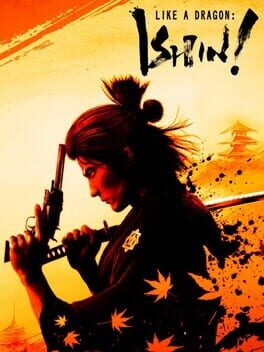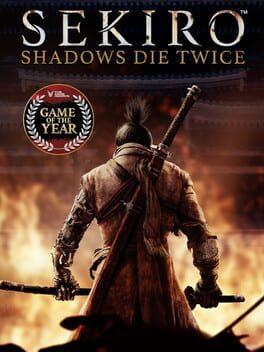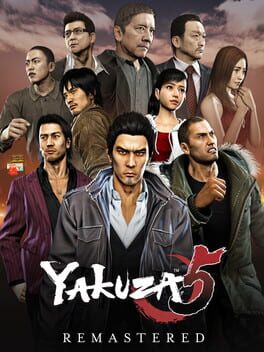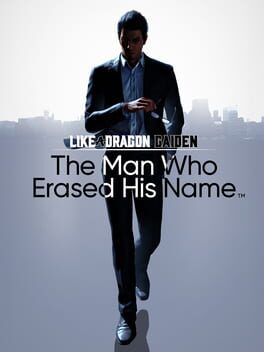MFilice
The historical spinoff I've been waiting for in years has been finally translated into English and released worldwide. And they go and make the game inferior to the original.
Like a Dragon: Ishin does nothing to address the issues the original Ishin had, and in fact, adds more problems into the mix.
Bosses have an insane amount of hyperarmour now, making them impossible to actually combo. The damage in Brawler style has been nerfed into the ground, making it virtually unusable except for parrying/tiger dropping. The four styles still have no cohesion between them, and are imbalanced as fuck as a result. Ground attacks have been removed in favour of just swinging the sword when enemies are on the ground and having them take damage. And most of all, both the trooper card system and boss magic attacks add nothing to the game except annoyance.
The sword upgrading system has been completely fucked as well, based on random enemy drops. It was so bad, the game had to patch this drop rate. It worked fine before, why change it?
On top of this, Unreal Engine adds the usual UE jank into the mix. Although, to give the game credit, the lighting in the world is quite beautiful and it has a quite robust options menu as well.
Overall, it's just disappointing that this is what we ended up getting. 100% an unnecessary remake, even just translating the original into English would've been better. If you don't want to play the original with a guide, go for this one, the base game is still great.
Like a Dragon: Ishin does nothing to address the issues the original Ishin had, and in fact, adds more problems into the mix.
Bosses have an insane amount of hyperarmour now, making them impossible to actually combo. The damage in Brawler style has been nerfed into the ground, making it virtually unusable except for parrying/tiger dropping. The four styles still have no cohesion between them, and are imbalanced as fuck as a result. Ground attacks have been removed in favour of just swinging the sword when enemies are on the ground and having them take damage. And most of all, both the trooper card system and boss magic attacks add nothing to the game except annoyance.
The sword upgrading system has been completely fucked as well, based on random enemy drops. It was so bad, the game had to patch this drop rate. It worked fine before, why change it?
On top of this, Unreal Engine adds the usual UE jank into the mix. Although, to give the game credit, the lighting in the world is quite beautiful and it has a quite robust options menu as well.
Overall, it's just disappointing that this is what we ended up getting. 100% an unnecessary remake, even just translating the original into English would've been better. If you don't want to play the original with a guide, go for this one, the base game is still great.
I started off absolutely hating this game when I tried playing it the first time, came back several years later and ended up loving it. I've never been that big of a fan of Fromsoft games so it was a pleasant surprise.
Game can be brutally difficult, but you'll learn as you go along. Parrying and reacting to unlockable attacks takes practice but becomes seperate nature after a while, making for a uniquely satisfying combat system. The boss lineup is easily one of the best I've fought in a game, they'll all test your knowledge in one way or another.
The world is cool and beautiful, and the story is decent as well. If I had one major gripe, I wish we had more incentive to use the Shinobi tools. The way they were implemented makes them too limited, never seeing mileage. The same holds true for the different combat skills outside of Mortal Draw
Overall, getting gud really was the answer. Hope they create another game like this again some day.
Game can be brutally difficult, but you'll learn as you go along. Parrying and reacting to unlockable attacks takes practice but becomes seperate nature after a while, making for a uniquely satisfying combat system. The boss lineup is easily one of the best I've fought in a game, they'll all test your knowledge in one way or another.
The world is cool and beautiful, and the story is decent as well. If I had one major gripe, I wish we had more incentive to use the Shinobi tools. The way they were implemented makes them too limited, never seeing mileage. The same holds true for the different combat skills outside of Mortal Draw
Overall, getting gud really was the answer. Hope they create another game like this again some day.
2019
One of the most conflicting games I've ever played. RGG at their best and at their worst. After finally finishing my playthrough, I've concluded I respect this game's ambition, with the goods outweighing the bad.
5 characters who are play different, 5 main cities that are unique in their own ways, 5 plots that come together at the end, loads of substories, 4 different side stories with their own character stories attached, an astronomical amount of minigames, this game has it all. On top of that, being built on a completely new engine (at the time), improving both texture quality and lighting from Yakuza 3/4.
As a result of this, the game can drag a bit and pacing is all over the place. You'll most likely forget parts of the plot due to the stop-and-start nature of the game. Additionally, some of the characters (Akiyama in particular) feel underbaked in comparison to others. The encounter rate is also absurdly high, which makes the game really annoying. Minigames are quite varied as well, with the fun of some being vastly different than others. I'd choose taxi racing as Kiryu or baseball as Shinada any day over dancing as Haruka or hunting as Saejima.
The stories are of varying quality. The game starts off strong with Kiryu but then takes a nosedive with Saejima. Your mileage with Haruka will vary, depending on whether you enjoy the dancing or not, but the plot in this section is pretty good regardless. Akiyama is introduced here as well, but plays more of a minor role than in Yakuza 4. Some people love Shinada and other people hate him. Personally, I'm in the camp of loving him. He's tied for my favourite story in the game alongside Kiryu. The plot centers around these characters and their interactions with a mastermind, controlling traitors throughout both the Tojo Clan and Omi alliance. The game does a good job at keeping up the intrigue with what's going on, slowly unravel more and more of the conspiracy with each character's story.
In saying that, it pains me to say that the game just couldn't stick the landing. The plot loses itself a bit, leading to some of the most random/lackluster final boss choices in the series. Characters are built up but then killed off screen or just don't appear again. But what could they do, they had to find a way to tie up 5 coalescing stories in a way that made sense.
But I cannot lie, despite my gripes, this game has easily some of the strongest moments of the series. My final take is this: if you're looking for the quintessential Yakuza game, I'd recommend playing 5. Just be ready for a long ride.
5 characters who are play different, 5 main cities that are unique in their own ways, 5 plots that come together at the end, loads of substories, 4 different side stories with their own character stories attached, an astronomical amount of minigames, this game has it all. On top of that, being built on a completely new engine (at the time), improving both texture quality and lighting from Yakuza 3/4.
As a result of this, the game can drag a bit and pacing is all over the place. You'll most likely forget parts of the plot due to the stop-and-start nature of the game. Additionally, some of the characters (Akiyama in particular) feel underbaked in comparison to others. The encounter rate is also absurdly high, which makes the game really annoying. Minigames are quite varied as well, with the fun of some being vastly different than others. I'd choose taxi racing as Kiryu or baseball as Shinada any day over dancing as Haruka or hunting as Saejima.
The stories are of varying quality. The game starts off strong with Kiryu but then takes a nosedive with Saejima. Your mileage with Haruka will vary, depending on whether you enjoy the dancing or not, but the plot in this section is pretty good regardless. Akiyama is introduced here as well, but plays more of a minor role than in Yakuza 4. Some people love Shinada and other people hate him. Personally, I'm in the camp of loving him. He's tied for my favourite story in the game alongside Kiryu. The plot centers around these characters and their interactions with a mastermind, controlling traitors throughout both the Tojo Clan and Omi alliance. The game does a good job at keeping up the intrigue with what's going on, slowly unravel more and more of the conspiracy with each character's story.
In saying that, it pains me to say that the game just couldn't stick the landing. The plot loses itself a bit, leading to some of the most random/lackluster final boss choices in the series. Characters are built up but then killed off screen or just don't appear again. But what could they do, they had to find a way to tie up 5 coalescing stories in a way that made sense.
But I cannot lie, despite my gripes, this game has easily some of the strongest moments of the series. My final take is this: if you're looking for the quintessential Yakuza game, I'd recommend playing 5. Just be ready for a long ride.
This review contains spoilers
This game is so much more than a side game. Great combat, side activities, and an amazing story. Addresses the criticisms of Yakuza 6, taking in aspects of Y0, 1, 2, 5, and 6 to give us an amazing final game for Kiryu's (supposedly) last beat-em-up.
Combat, while not being as good as Lost Judgment, is still extremely fast and fluid. Kiryu's DE Dragon/Yakuza style has been expanded with new moves such as charged/triple finishers and juggling to give us the definitive version of this combat style. Agent style, while feeling slightly underbaked in comparison is fast and evasive, with it's gadgets rounding out the moveset. I just wish we could use the wire on bosses. The game is surprisingly difficult on higher difficulties as well, requiring you to utilize your entire kit in combat.
The story starts slow but interesting with its John Wick-esque Spy Thriller/Agent aspects. It can lull a bit in the middle but that's pretty much an RGG staple. Ends off extremely strong though, with one of the best final bosses in the series. The ending cutscene is easily one of the most beautiful moments in the series, rounding out Kiryu's journey very well.
It was also nice to be back in a full Sotenbori after K2 and YLAD only gave us half of it. The Castle is an interesting locale as well, giving us a small but unique hub world to mess around in. The lighting in the engine has also been vastly improved, really making these locations pop.
The game suffers in terms of side content, however. Substories make a return, although there are very few in-depth ones. Most are just to recruit a new member to your colosseum roster. The game also features stroll-and-patrol missions, similar to the Troublr missions from Yakuza 6. In terms of minigames, both pool and pocket circuit make a grand return. There is also the live action cabaret, which doesn't interest me as much but will be appealing to some. The colloseum makes a return as well, being the best iteration of it by far. You can play with around 40 different characters, all with unique movesets. It's a good time.
Overall, for a side game, it greatly exceeded my expectations, becoming one of my favourite main-series entries. Would definitely recommend a play for fans of the series, well worth the price tag.
I just wish it had NG+.
Combat, while not being as good as Lost Judgment, is still extremely fast and fluid. Kiryu's DE Dragon/Yakuza style has been expanded with new moves such as charged/triple finishers and juggling to give us the definitive version of this combat style. Agent style, while feeling slightly underbaked in comparison is fast and evasive, with it's gadgets rounding out the moveset. I just wish we could use the wire on bosses. The game is surprisingly difficult on higher difficulties as well, requiring you to utilize your entire kit in combat.
The story starts slow but interesting with its John Wick-esque Spy Thriller/Agent aspects. It can lull a bit in the middle but that's pretty much an RGG staple. Ends off extremely strong though, with one of the best final bosses in the series. The ending cutscene is easily one of the most beautiful moments in the series, rounding out Kiryu's journey very well.
It was also nice to be back in a full Sotenbori after K2 and YLAD only gave us half of it. The Castle is an interesting locale as well, giving us a small but unique hub world to mess around in. The lighting in the engine has also been vastly improved, really making these locations pop.
The game suffers in terms of side content, however. Substories make a return, although there are very few in-depth ones. Most are just to recruit a new member to your colosseum roster. The game also features stroll-and-patrol missions, similar to the Troublr missions from Yakuza 6. In terms of minigames, both pool and pocket circuit make a grand return. There is also the live action cabaret, which doesn't interest me as much but will be appealing to some. The colloseum makes a return as well, being the best iteration of it by far. You can play with around 40 different characters, all with unique movesets. It's a good time.
Overall, for a side game, it greatly exceeded my expectations, becoming one of my favourite main-series entries. Would definitely recommend a play for fans of the series, well worth the price tag.
I just wish it had NG+.
2021
Easy contender for my favourite game of all time. RGG's peak, and a must-play if you're a fan of the series, a mystery/true-crime enjoy, or a fan character action games in general.
TLDR: While the story is worse compared to Judgment, the game excels far past its predecessor in all other aspects.
The combat is extremely mechanically complex. Yagami has a ton of options with combos, juggling, wall jumping, counters throughout his three (or four, including the DLC) fighting styles. The hidden arts mechanic alone adds a whole new layer to RGG combat. I can easily state that I never got bored of fighting random encounters (something that commonly happens with games in this series for me). The game also did a lot to reduce Dragon Engine jank through aspects like removing the guard-block bounce and using the DE's ragdoll physics to its advantage with the afformentioned juggling. I love it.
Detective mechanics also make a return. They're slightly more developed than in Judgment but still pretty weak. Definitely not annoying like the abysmally-long tailing missions in the first game though.
Game has a huge wealth of side content as well. Substories, school stories, minigames and so much more. Though despite having such a large amount, the game does not feel overbloated in my opinion.
Despite stating the story is worse, it is still a gripping narrative with some very powerful moments. Both main villains were very interesting and complex characters whose motivations really tied in well to the theme of different forms of justice. My main issues stem from the fact that the Judgment cast has no real driving motivations in the story like the first game, and that the conspiracy becomes slightly too grand at the end, leading the story to start to lose itself. Kamurocho also had very little relevance in the main plot, I would've preferred a little more focus on it.
Just a great game all around, can't wait until Judgment 3.
TLDR: While the story is worse compared to Judgment, the game excels far past its predecessor in all other aspects.
The combat is extremely mechanically complex. Yagami has a ton of options with combos, juggling, wall jumping, counters throughout his three (or four, including the DLC) fighting styles. The hidden arts mechanic alone adds a whole new layer to RGG combat. I can easily state that I never got bored of fighting random encounters (something that commonly happens with games in this series for me). The game also did a lot to reduce Dragon Engine jank through aspects like removing the guard-block bounce and using the DE's ragdoll physics to its advantage with the afformentioned juggling. I love it.
Detective mechanics also make a return. They're slightly more developed than in Judgment but still pretty weak. Definitely not annoying like the abysmally-long tailing missions in the first game though.
Game has a huge wealth of side content as well. Substories, school stories, minigames and so much more. Though despite having such a large amount, the game does not feel overbloated in my opinion.
Despite stating the story is worse, it is still a gripping narrative with some very powerful moments. Both main villains were very interesting and complex characters whose motivations really tied in well to the theme of different forms of justice. My main issues stem from the fact that the Judgment cast has no real driving motivations in the story like the first game, and that the conspiracy becomes slightly too grand at the end, leading the story to start to lose itself. Kamurocho also had very little relevance in the main plot, I would've preferred a little more focus on it.
Just a great game all around, can't wait until Judgment 3.




